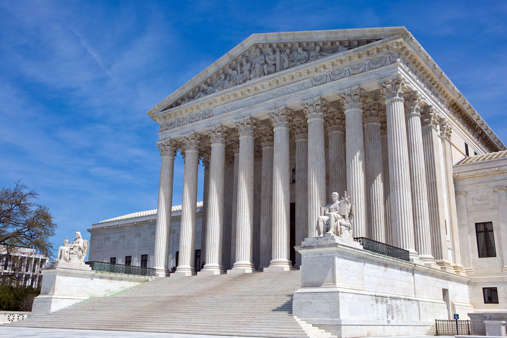The Food and Drug Administration (FDA) recently issued a final rule that amends and clarifies the criteria for when the use of a substance in food for humans or animals is not subject to the premarket approval requirements of the Food, Drug & Cosmetic Act (FDCA) because the substance is generally recognized as safe (GRAS) under the conditions of its intended use. The final rule adopts, with some modifications, a proposed rule issued in April 1997. The FDA reopened the comment period on the proposed rule in December 2010.
The final rule, which takes effect Oct. 16, 2016, will replace the voluntary GRAS affirmation petition process with a voluntary notification procedure. In the Federal Register notice, the FDA states that the clarified criteria for GRAS status should help the public draw more informed conclusions about whether the intended conditions of use of a substance in food for humans or animals complies with the FDCA, and the notification procedure will enable the public to be aware of whether the FDA has questioned the basis of a conclusion of GRAS status.
Although the final rule makes several changes to the proposed version, in general it continues to give the food industry a fair amount of control over the designation of food ingredients as GRAS. As a result, the final rule is unlikely to appease public interest groups that have been critical of the GRAS notification procedure in recent years.
The 329-page notice in the Federal Register includes a summary of the major provisions of the final rule. According to the summary, the final rule clarifies the criteria for the use of a substance to be eligible for classification as GRAS and establishes a “new” administrative procedure for any person to notify the FDA of the basis for a conclusion that a substance is GRAS under the conditions of its intended use. With respect to criteria for eligibility for classification as GRAS, the summary states that:
- A substance cannot be classified as GRAS under the conditions of its intended use if the available data and information do not satisfy the safety standard for a food additive under the FDCA
- General recognition of safety requires common knowledge, throughout the expert scientific community knowledgeable about the safety of substances directly or indirectly added to food, that there is a reasonable certainty the substance is not harmful under the conditions of its intended use
- “Common knowledge” can be based on either “scientific procedures” or on experience based on common use of a substance in food prior to January 1, 1958
- General recognition of safety through scientific procedures must be based upon the application of generally available and accepted scientific data, information, or methods, which ordinarily are published, as well as the application of scientific principles, and may be corroborated by the application of unpublished scientific data, information, or methods
With respect to the procedure for submitting a GRAS notice, the final rule addresses these details:
- Definitions for certain terms, including amendment, GRAS notice, notified substance, notifier, qualified expert, supplement, we/our/us, and you/your
- A clear statement of the opportunity for any person to submit a GRAS notice
- Information on available formats (electronic and paper) and where to send a GRAS notice
- What data and other information may be incorporated into a GRAS notice
- General provisions applicable to a GRAS notice
- Specific information that must be provided in a GRAS notice, including:
- Signed statements and a certification (Part 1)
- The identity, method of manufacture, specifications, and physical or technical effect of the notified substance (Part 2)
- Dietary exposure (Part 3)
- Self-limiting levels of use, in circumstances where the amount of the notified substance that can be added to human food or animal food is limited because the food containing levels of the notified substance above a particular level would become unpalatable or technologically impractical (Part 4)
- The history of consumption of the substance for food use by a significant number of consumers (or animals in the case of animal food) prior to January 1, 1958, if a conclusion of GRAS status is based on common use of the substance in food prior to 1958 (Part 5)
- A narrative that provides the basis for the conclusion of GRAS status, including why the scientific data, information, methods, and principles described in the notice provide a basis for the conclusion that the notified substance is generally recognized, among qualified experts, to be safe under the conditions of its intended use (Part 6)
- A list of the data and information discussed in the narrative, specifying which of these data and information are generally available, and which of these data and information are not generally available (Part 7)
- Process to submit an amendment to a GRAS notice
- Process to request that FDA cease to evaluate a GRAS notice
With respect to FDA’s administration of a GRAS notice, the final rule specifies:
- Information about how FDA will file a GRAS notice, respond to it, and send subsequent correspondence about it
- FDA’s commitment to respond within 180 days of filing of a GRAS notice, with a potential to extend its response timeframe by another 90 days
- FDA’s procedures in the event the intended conditions of use of the notified substance include use in a product subject to regulation by the Food Safety and Inspection Service (FSIS) of the U.S. Department of Agriculture (USDA)
- Provisions governing the public disclosure of a GRAS notice, including the actions FDA takes to make some information regarding a GRAS notice readily accessible to the public
The Federal Register also includes a helpful, multi-page table summarizing the changes to the 1997 proposed rule as compared to the final rule. A copy of the table can be found here.
For more information, please contact the Barnes & Thornburg LLP attorney with whom you work or one of the following attorneys in the firm’s Food, Drug & Device Group: Lynn Tyler at (317) 231-7392 or lynn.tyler@btlaw.com; or Alicia Raines Barrs at (317) 231-7398 or alicia.rainesbarrs@btlaw.com.
© 2016 Barnes & Thornburg LLP. All Rights Reserved. This page, and all information on it, is proprietary and the property of Barnes & Thornburg LLP. It may not be reproduced, in any form, without the express written consent of Barnes & Thornburg LLP.
This Barnes & Thornburg LLP publication should not be construed as legal advice or legal opinion on any specific facts or circumstances. The contents are intended for general informational purposes only, and you are urged to consult your own lawyer on any specific legal questions you may have concerning your situation.
Visit us online at www.btlaw.com and follow us on Twitter @BTLawNews.









/Passle/6488d4630e7e25c9ac9f834a/MediaLibrary/Images/2024-07-18-19-15-33-047-669969d52008239f764a11af.png)


/Passle/6488d4630e7e25c9ac9f834a/SearchServiceImages/2024-07-17-15-17-44-967-6697e0980752df56d2441ada.jpg)
